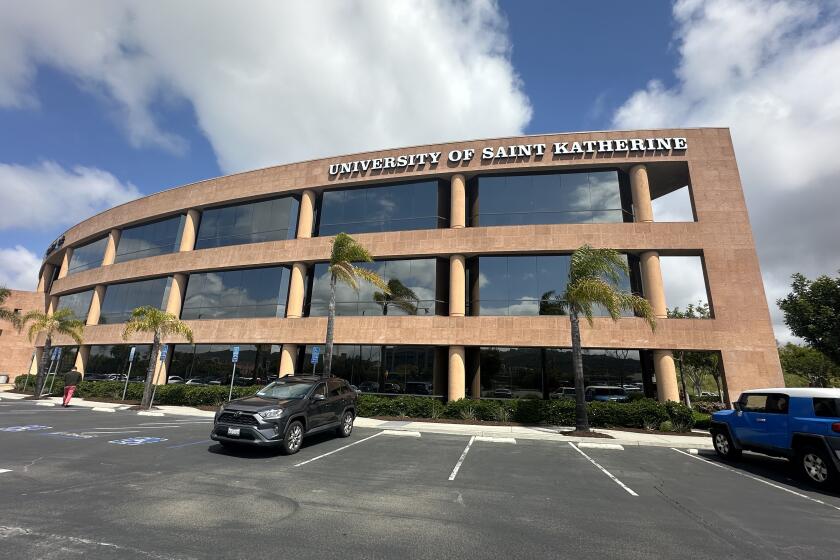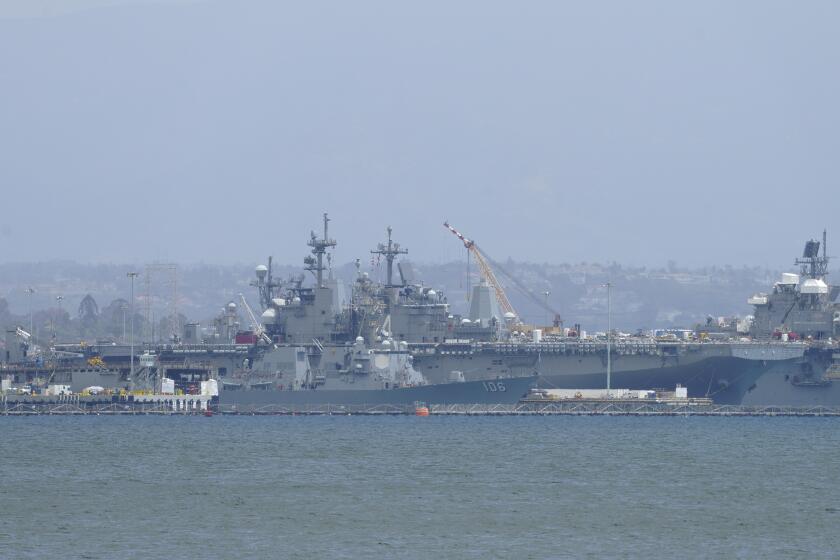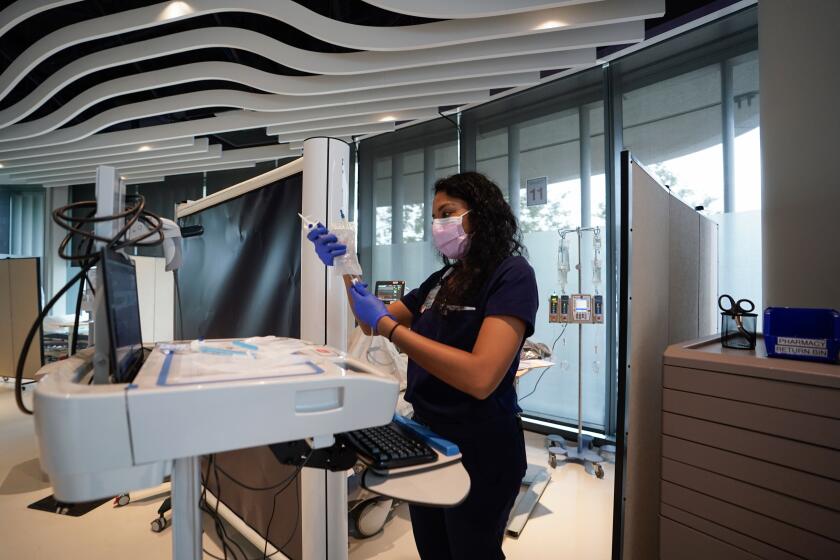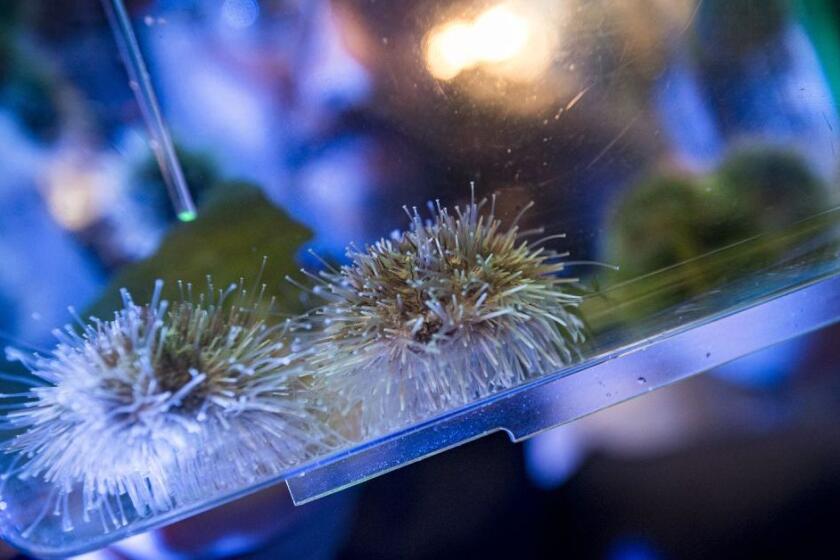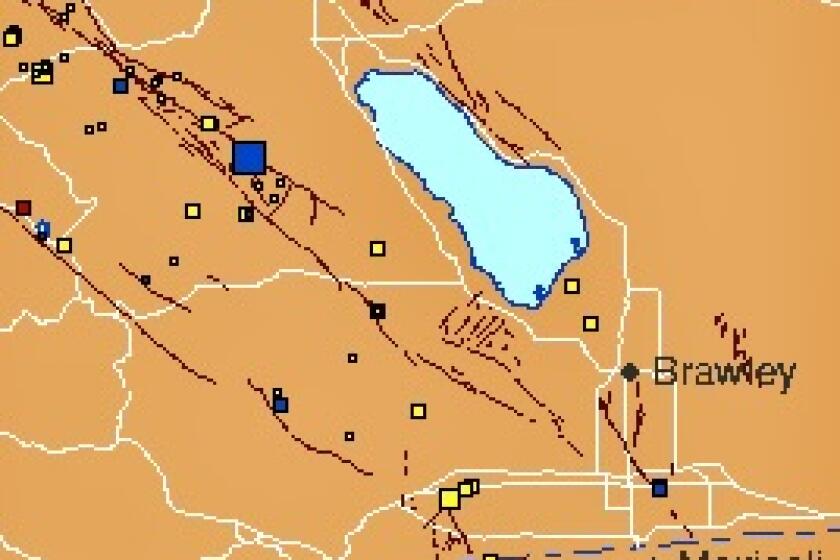3 Earth-sized planets found in ‘habitable zone’
Astronomers have discovered three Earth-sized planets that might be in the “habitable zone” of a small star, raising the possibility that the celestial trio have liquid water, a pre-requisite for life.
Advances in technology have enabled scientists to find about 2,000 planets beyond our solar system since the 1990s, and there’s some evidence for roughly 4,700 more.
But the new discovery in constellation Aquarius involves planets that might be just the right distance from their host star to have surface water. Fewer than 40 of these so-called “Goldilocks” worlds are known to exist.
This also is the first time that scientists have found planets orbiting a comparatively small, faint object known as ultracool dwarf star, according to an international research team that includes UC San Diego, NASA, the University of Liège in Belgium and other institutions. The team reported its findings Monday in the journal Nature.
The star -- known as TRAPPIST-1 -- is only slightly larger than Jupiter. But it’s only 38.8 light years from Earth, which is relatively close. Some “exoplanets” are more than 13,000 light years away.
“This is almost certainly the first of many planets (that will) be found around these cool stars, because up to now their faintness made it risky to invest time and resources to monitor large numbers of them,” said Adam Burgasser, a UC San Diego astronomer who led the group that characterized TRAPPIST-1.
“The kind of planets we’ve found are very exciting from the perspective of searching for life in the universe beyond Earth.”
Scientists have a variety of methods for searching for exoplanets. One involves looking for stars that wobble a bit. The wobble can be produced by the gravitational influence of a planet that’s hidden by the glare of the star.
But the most common technique involves using a telescope to study whether a star’s brightness briefly dips. Those dips can be caused by a planet passing in front of the star, as seen from Earth. That is how scientists found the three planets in Aquarius. The phenomenon was observed late last year from La Silla Observatory in Chile.
Subsequent work with larger telescopes revealed that the planets appear to be roughly the size of Earth. The planet closest to the star completes an orbit every 1.5 days. The second does so in 2.4 days. The speed of the third, outer planet, has yet to be clearly determined, but may have an orbital period that lasts up to 73 days.
The research team was led by Michaël Gillon of the University of Liège, who said in a statement, “With such short orbital periods, the planets are between 20 and 100 times closer to their star than the Earth to the Sun. The structure of this planetary system is much more similar in scale to the system of Jupiter’s moons than to that of the Solar System.”
The statement also says the location of the planets “puts them just inside the habitable zone for this system, an orbital ring of distances at which surface water is likely to be liquid and life as we know it most likely.
“It is still possible that they possess habitable regions on their surfaces, although complexities such as their clouds, and atmospheres—if they have atmospheres—make it hard to predict whether surface conditions are really suitable for life. The third, outer, planet’s orbit is not yet well known, but it probably receives less radiation than the Earth does, but maybe still enough to lie within the habitable zone.”
The possibility of life intrigues UC San Diego’s Burgasser, who said, “I think this discovery allows us to broaden our thinking a bit about the environments (in which) life might emerge.
“The inner two planets would seem to be too hot because of their proximity to the star and the likelihood that they are tidally locked ... but there are recent models that suggest you can still have habitable regions at the terminators, or that atmospheric circulation might dump this heat out of the ‘dark side’ and the entire planet may be more temperature.
“The outer planet, on the other hand, looks very promising from a habitability perspective. But of course there is a lot that depends on the planet’s properties. Studies of Earth, Venus and Mars suggest they all started off as potentially habitable. But only Earth had the conditions to maintain life to this day. We will start to be able to piece this together once we begin to probe the atmospheres. But its certainly exciting to speculate about.”
Get Essential San Diego, weekday mornings
Get top headlines from the Union-Tribune in your inbox weekday mornings, including top news, local, sports, business, entertainment and opinion.
You may occasionally receive promotional content from the San Diego Union-Tribune.

